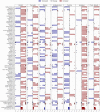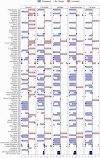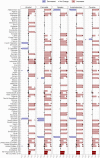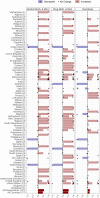A Global Survey on Changes in the Supply, Price, and Use of Illicit Drugs and Alcohol, and Related Complications During the 2020 COVID-19 Pandemic
- PMID: 34421664
- PMCID: PMC8377291
- DOI: 10.3389/fpsyt.2021.646206
A Global Survey on Changes in the Supply, Price, and Use of Illicit Drugs and Alcohol, and Related Complications During the 2020 COVID-19 Pandemic
Abstract
Background and Aims: COVID-19 has infected more than 77 million people worldwide and impacted the lives of many more, with a particularly devastating impact on vulnerable populations, including people with substance use disorders (SUDs). Quarantines, travel bans, regulatory changes, social distancing, and "lockdown" measures have affected drug and alcohol supply chains and subsequently their availability, price, and use patterns, with possible downstream effects on presentations of SUDs and demand for treatment. Given the lack of multicentric epidemiologic studies, we conducted a rapid global survey within the International Society of Addiction Medicine (ISAM) network in order to understand the status of substance-use patterns during the current pandemic. Design: Cross-sectional survey. Setting: Worldwide. Participants: Starting on April 4, 2020 during a 5-week period, the survey received 185 responses from 77 countries. Measurements: To assess addiction medicine professionals' perceived changes in drug and alcohol supply, price, use pattern, and related complications during the COVID-19 pandemic. Findings: Participants reported (among who answered "decreased" or "increased") a decrease in drug supply (69.0%) and at the same time an increase in price (95.3%) globally. With respect to changes in use patterns, an increase in alcohol (71.7%), cannabis (63.0%), prescription opioids (70.9%), and sedative/hypnotics (84.6%) use was reported, while the use of amphetamines (59.7%), cocaine (67.5%), and opiates (58.2%) was reported to decrease overall. Conclusions: The global report on changes in the availability, use patterns, and complications of alcohol and drugs during the COVID-19 pandemic should be considered in making new policies and in developing mitigating measures and guidelines during the current pandemic (and probable future ones) in order to minimize risks to people with SUD.
Keywords: COVID-19; addiction; behavioral addiction; global survey; illicit drug market; substance use disorder.
Copyright © 2021 Farhoudian, Radfar, Mohaddes Ardabili, Rafei, Ebrahimi, Khojasteh Zonoozi, De Jong, Vahidi, Yunesian, Kouimtsidis, Arunogiri, Hansen, Brady, ISAM Global Survey Consortium (ISAM-GSC), Potenza, Baldacchino and Ekhtiari.
Conflict of interest statement
The authors declare that the research was conducted in the absence of any commercial or financial relationships that could be construed as a potential conflict of interest.
Figures







References
-
- World Health Organization . Coronavirus disease (COVID-19) Situation Report - 176. WHO; (2020). 10.7175/cmi.v14i1.1467 - DOI
-
- Farhoudian A, Baldacchino A, Clark N, Gerra G, Ekhtiari H, Dom G, et al. . COVID-19 and substance use disorders: recommendations to a comprehensive healthcare response. An International Society of Addiction Medicine (ISAM) practice and policy interest group position paper. Autonomic Neurosci Basic Clin. (2020) 11:129–46. 10.32598/bcn.11.covid19.1 - DOI - PMC - PubMed
Grants and funding
LinkOut - more resources
Full Text Sources
Miscellaneous

